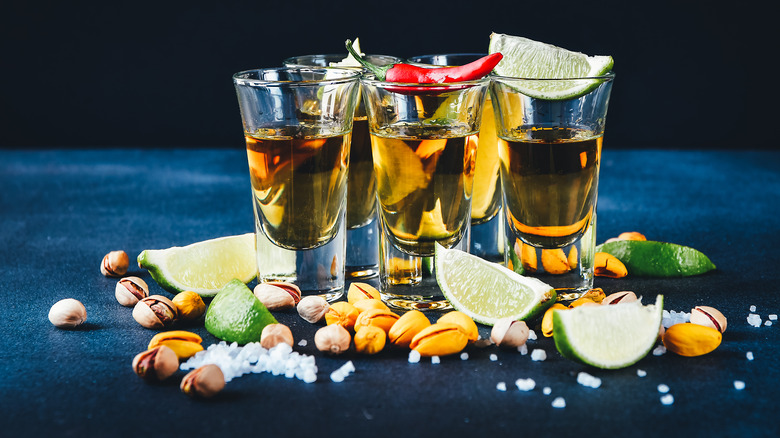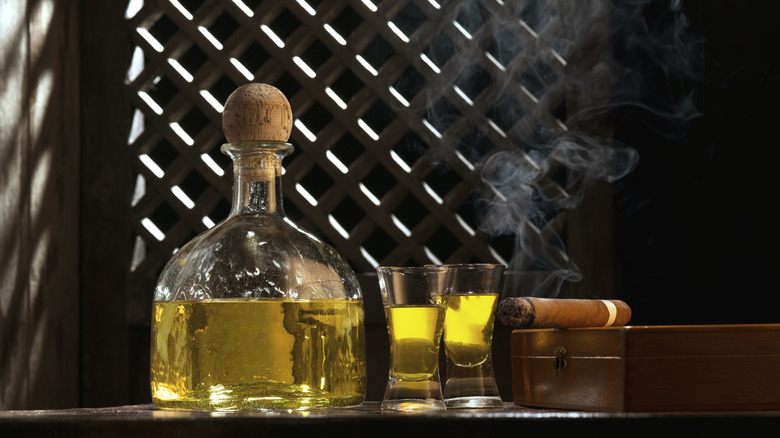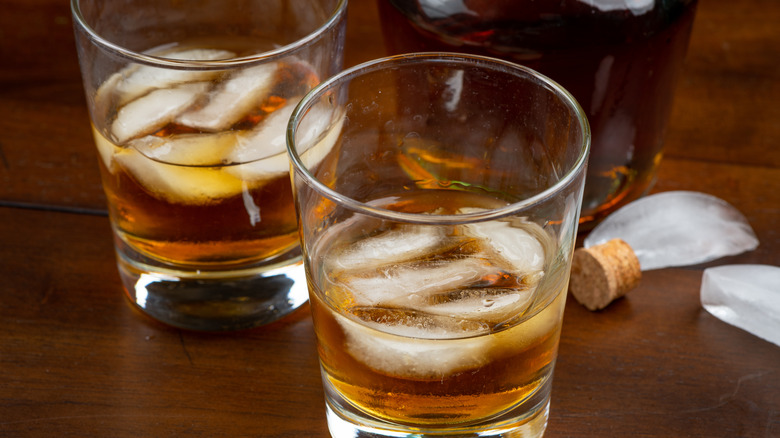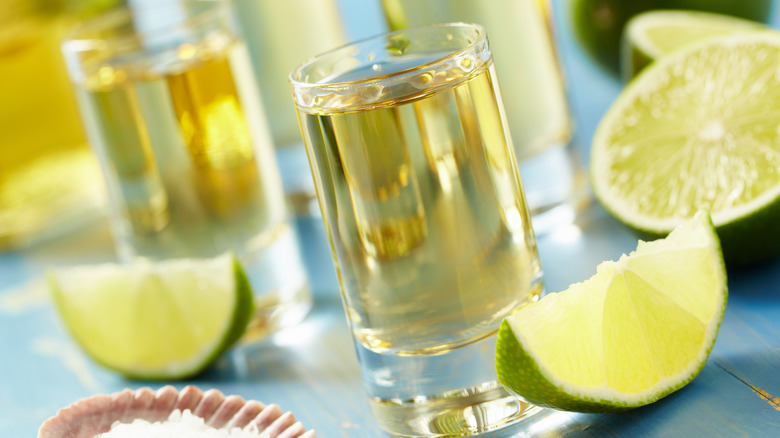How Añejo And Reposado Tequila Differ From Each Other
Tequila is like an old amigo in the world of alcohol. Though its roots in Mexico remain strong, the agave-based liquor has long been a bar staple worldwide. Añejo and reposado are words you may hear often in tequila talk, and most seasoned tequila drinkers recognize six different types. Both añejo and reposado are among the aged category compared to the younger and fresher tequila blanco. There are critical differences between these two, so if you don't yet know them, let this be your basic guide.
As with any alcohol, the tequila-making process is a true craft. Every factor of its creation impacts the final product, including its flavor, color, and how it pairs with other ingredients. The differences between tequila añejo and reposado come down to one particularly impactful factor: the time the tequila ages in the barrel. Añejo sits a lot longer than reposado before getting bottled– añejo is Spanish for old, and reposado means rested.
A taste of tequila reposado
Tequila reposado, or rested tequila, is tequila that ages in an oak barrel for at least two months and at most one year. It has a gold hue and contains 40% alcohol by volume. Its prolonged contact with the barrel helps it develop a warmth in flavor with notes of vanilla and honey. However, since it can only rest up to a certain point, it retains a strong, crisp flavor like its younger blanco counterpart but packs less of an alcoholic punch.
It is smooth enough to sip or shoot on its own, but it also complements cocktails well. It makes a good substitution in cocktail recipes that call for tequila blanco, as it will bring a similar sharpness to counter sweet syrups and fruits, but it will also round them out with its smoothness. With attributes of both young and aged tequila, it is versatile enough to be a bartender's go-to.
A taste of tequila añejo
Tequila añejo, or aged tequila, is appropriately named for the amount of time the liquor spends in an oak barrel before seeing the light of day again. It's typically aged between one and three years, and because barrel contact is essential to develop its flavor, is kept in a vessel smaller than the standard hogshead for better contact.
This time in the barrel leads it to develop a darker, amber color and an oaky, robust flavor profile that's smoother than tequila reposado. Its smoothness makes it an ideal tequila for sipping solo rather than shooting back or mixing into a cocktail full of other strong flavors. In more liquor-forward drinks like Palomas or Honey Traps, añejo makes a great choice. Tasting tequila añejo slowly and in a simpler form allows the drinker to savor and appreciate the rich, intricate notes of vanilla, oak, and spices it offers.
Can you swap añejo and reposado?
Given the similar qualities of tequila reposado and añejo, you may wonder if you can swap one for another. Generally, the answer is yes, but with a few qualifications.
A seasoned tequila drinker may notice that the same tequila variety from a different brand may pack a sharper punch or offer a smoother flavor for sipping. While aging time plays a key role, other aspects of the production process affect the tequila's flavor and interchangeability. The back of a tequila bottle can tell you plenty about its quality.
While some reposado brands are smooth enough to sip like añejo, some may teeter on the sharper side, which, depending on one's flavor tolerance, may make it difficult to savor. In cocktails, tequila reposado fairs better with bright, citrusy flavors, and añejo with earthier, richer flavors. Overall, the spectrum of tequila spans wide, so don't be afraid to experiment and discover your own taste.



